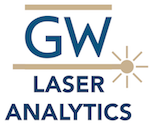Carbon, 49, Issue 15, December 2011, Pages 5298-5311
The predictions of “soot” concentrations from numerical simulations for nitrogen-diluted, ethylene/air flames are compared with laser-induced incandescence and Raman spectra observed from samples thermophoretically extracted using a rapid insertion technique. In some flame regions, the Raman spectra were obscured by intense, radiation that appeared to peak in the near infrared spectral region. There is a good agreement between spatial profiles of this ex situ laser-induced incandescence (ES-LII) and the “traditional” in situ laser-induced incandescence (IS-LII). Raman signatures were observed from low in the flame and extended into the upper flame regions. The spectra consisted of overlapping bands between 1000 and 2000 cm−1 dominated by the “G” band, near ≈1580 cm−1, and the “D” band in the upper 1300 cm−1 range. Several routines are explored to deconvolve the data including 3- and 5-band models, as well as a 2-band Breit–Wigner–Fano (BWF) model. Because the Raman signals were observed at heights below those where in situ LII was observed, we postulate that these signals may be attributable to smaller particles. The results suggest that the observed Raman signals are attributable to particulate with modest (≈1 nm) crystallite sizes. This observation is discussed in the context of current models for nascent particle formation.
